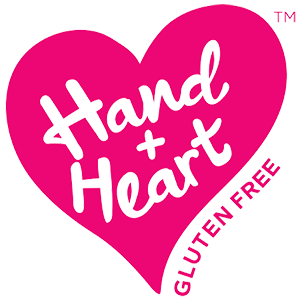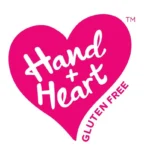Mastering Gluten-Free Baking: Top 3 Tips for Success
Hand + Heart Gluten Free
April 26, 2024

Gluten-free baking can be a daunting task for many, but with the right knowledge and techniques, you can achieve delicious results that rival traditional baked goods. In this blog post, we’ll explore the top three tips for gluten-free (GF) baking, ensuring your creations turn out perfectly every time. Plus, we’ll throw in a bonus tip to keep things extra safe and enjoyable.
Tip 1: When Baking Pastries, Temperature is Key
All Liquid Ingredients Should Be At Optimal Temperature
Warm, cold or room temperature? Start by ensuring that all liquid ingredients, including water, milk, eggs and butter, are at a temperature suggested on the recipe. When baking pastries such as gluten free pie crusts, butter and liquid ingredients should be kept cold for a flaky and tender pastry. Baking a bread? Liquid needs to be at temperature no warmer than 115ºF to make sure that yeast is activated. Too hot will kill the yeast and will prevent your dough from rising.
Tip 2: Invest in a Stand Mixer
While kneading is a common practice in traditional baking, gluten-free baking requires a different approach. Instead of kneading, it’s best to use a stand mixer. This powerful tool allows you to incorporate the liquid ingredients thoroughly and smooth out the batter without the need for strenuous kneading. Gluten-free dough tends to be on a sticky side due to liquid requirements so using a stand mixer will prevent a messy experience.
A stand mixer is incredibly versatile and comes in handy for various gluten-free baked goods, including cookies, pie crusts, and breads. It ensures even distribution of ingredients, resulting in a consistent texture and better overall quality of your baked goods.
Tip 3: Understand the Thirsty Nature of Gluten-Free Flours
Gluten-free flours have a unique characteristic: they are “thirsty” for moisture.
Unlike traditional wheat flour, gluten-free flour tends to absorb more liquid. To achieve the perfect texture in your gluten-free baked goods, it’s essential to measure your ingredients accurately and provide sufficient hydration for the flour.
This means that you may need to adjust the liquid content in your recipes. Be prepared to experiment a bit to find the right balance. Don’t be surprised if you need to add a little more liquid than you’re used to in traditional baking. It’s all part of mastering gluten-free baking and ensuring your treats turn out moist and delicious.
To learn more about the different flours and how Hand + Heart Gluten Free is the perfect blend, read our blog, Gluten Free Flour: What To Know
Bonus Tip: Avoid Cross-Contamination/Cross Contact
If you’re baking gluten-free treats for a crowd, there’s an additional consideration to keep in mind – cross-contamination/cross-contact. Even trace amounts of gluten can be problematic for individuals with gluten sensitivities or celiac disease.
To prevent cross-contamination, designate specific utensils, mixing bowls, baking pans, or specific gluten-free zones in your kitchen exclusively for gluten-free baking. Be meticulous about cleaning your workspace and equipment to eliminate any remnants of gluten-containing ingredients. This extra effort will ensure that everyone can enjoy your gluten-free creations safely and minimize any cross-contamination or contact risks
The Takeaway
With these top three tips and a bonus tip in your gluten-free baking toolkit, you’re well on your way to becoming a master of the craft. pay attention to the temperature requirements of whichever pastries/goods you are baking, invest in a stand mixer, and understand the unique moisture needs of GF flours. By following these guidelines, you’ll consistently produce gluten-free baked goods that are both delicious and safe for everyone to enjoy. Don’t forget! Hand & Heart Gluten Free is chock full of AMAZING gluten-free recipes and tips that will help keep your GF lifestyle YUMMY and simple!


